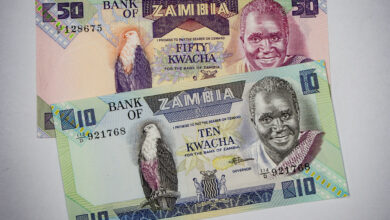Top 10 African Names Girls Children can use Associated with African queens

African queens have ruled Africa for ages, they are a great source of inspiration. There are lots of African names girls children can use associated with African queens, which can be a source of blessing and power.
African Names Girls : Queen Nzingha
Queen Nzingha is otherwise called the “Amazon Queen of Matamba”.
Brought into the world in West Africa in 1583, she pursued a long term battle against the Portuguese, who went after her sibling’s realm while chasing after slaves for the slave exchange.
At first, she was sent to negotiate for peace, and she was said to have mind-boggling conciliatory expertise, yet when the peace bargain broke down, the 30 years’ battle with the Portuguese started.
Notwithstanding, Nzingha’s discretionary expertise was perfect to such an extent that she figured out how to arrange a partnership with the Dutch Empire, which denoted the very first African-European union against a European oppressor.
Despite the fact that she was at last constrained far away, banished for good, she actually figured out how to rouse her kin because of her commitment to opportunity and longing for peace for her kin.
African Names Girls: Makeda
Most likely better referred to in the world as “Queen of Sheba”, Makeda was the Queen of Ethiopia in 960BC.
Makeda was drawn in by accounts of a popular Judean ruler, and rumors have spread far and wide suggesting that in the end embraced the long, tiring excursion from Ethiopia to Jerusalem so she could meet this ruler, who was the incomparable King Solomon.
Makeda and Solomon were said to have in a split second experienced passionate feelings for, being so dazzled with one another, and out of their marriage came to a child, Menelik I.
Sovereign Makeda is then professed to have managed over Sheba and Arabia as well as Ethiopia:
African Names Girls: Dihya
Bedouins nicknamed her “al-Kahina” (meaning the “priestess seer”), yet her genuine name was supposed to be Dihya, which is said to actually imply “Attractive, head of warriors” in Urdu.
At the point when you read about her achievements as a Berber Queen, you understand the reason why she was given these names.
She drove a Berber protection from the incomparable Arab extension of Northwest Africa, which was then known as Numidia (current Algeria).
She ruled from the ahead of schedule to the late seventh 100 years. Various legends encompass her:
One case is that in her childhood, she liberated her kin from a detestable despot by consenting to wed him, and afterward killing him on their wedding night!
She was likewise expected to have the endowment of divination and prediction.
Different legends portray her as having long hair and an extraordinary size and her being a magician. Maybe her most striking inheritance was that she had a characteristic gift for Ornithology, which evidently molded science and schooling in the Middle East.
Also Read: 10 African Names of African Divine Beings
African Names Girls: Cleopatra
Presumably the most well-known of all African Queens, Cleopatra was the Queen of Egypt from 69-30BC and is renowned for making a union with Julius Caesar to prevail upon control of the entire Egyptian Kingdom.
The beginnings of this amazing story nonetheless, are fairly dull: She had to wed her more youthful sibling, Ptolemy XII.
As despicable as this sounds, it was family custom at that point. It is said that her sibling/spouse has unintentionally suffocated in the stream Nile, but taking into account the conditions it appears to be similarly as logical this was a homicide/death.
Maybe shockingly, she then, at that point, wedded her significantly more youthful sibling Ptolemy XIII, however in every practical sense, this was only a marriage of comfort that had simply political thought processes: truly, Cleopatra was the paramour of Caesar and followed him back to Rome to live.
While living with Caesar in Rome, she had a youngster named Caesarion (later named Ptolemy XIV), who was in all probability Caesar’s child. After Caesar was killed and Rome dove into a brief yet ridiculous nationwide conflict, Cleopatra got back to Egypt.
African Names for Girls: Seh-Dong-Hong-Beh
A head of the Dahomey Amazons, her name signifies “God Speaks True”. In 1851 she drove a 6000 in number all-female armed force against the Egba stronghold of Abeokuta.
The Egba had European guns since they were basically a vassal realm of the French provincial powers, safeguarding French interests in the locale that is currently Benin.
Notwithstanding just being furnished with lances, swords, and bows, the Amazons won, however, took monstrous setbacks, with just 1200 out of the 6000 ladies fighters enduring the fight.
Quick forward about 40 years to 1892, and King Behanzin of Dahomey (Benin) was currently a full-scale battle with the French pilgrims over exchanging freedoms.
He and Seh-Dong-Hong-Beh lead a joined power of 12,000 soldiers into an extraordinary fight with the French, with 2,000 of this number being Amazon female champions.
This time they had rifles as well as swords and lances, but the French this time purchased assault rifles and weighty cannons, however, notwithstanding this mind-boggling innovative predominance, the Amazon group of the military went after the French when their soldiers were endeavoring to cross a waterway.
They caused weighty setbacks for the French and afterward, the Amazon charged and participated close by to hand battle with the French, who were immediately compelled to withdraw.
African Names for Girls: Candace Empress of Ethiopia
The Empress of Ethiopia, known as Queen Candace (signifying “lovely” or “sparkling”) at that point, in 332BC, was perhaps the best military strategist ever.
Nothing is a greater demonstration of this than the tale of Alexander the Great:
During this time, Alexander was on his extraordinary success in the well-explored regions of the planet at that point, however when he arrived at the boundaries of Ethiopia, he ended his armed forces.
He didn’t endeavor to wage war with the incomparable Candace, such was her standing.
Furthermore, losing to a lady at the time would’ve been viewed as an extraordinary shame in such a male-centric culture.
Candace had recently battled against extraordinary Arab attacks, however, she lead the African opposition and drove the Arab trespassers as far back as current Tripoli in Libya, into the Mediterranean ocean.
She was an in-your-face patriot and was not propelled by any strict conviction, simply the craving for opportunity and freedom.
Hatshepsut, Queen of Kemet
Hatshepsut governed from 1503-1482BC, and was without a doubt one of the best leaders of Ancient Egypt (known as Kemet at that point) ever.
She was known as a fighter sovereign, and this drawn-out similarly to inward epic showdowns as well as outside ones as she slyly competed for political power inside the Kemetic pecking order.
Hatshepsut portrayed herself in whatever number of manly properties as could reasonably be expected in a fixation to become adored in hundreds on the off chance that not millennia to come.
She applied her case to a high position when her sibling Thutmose II passed on. By this point, she had previously destroyed practically all resistance to her rising, thus she practiced her power unreservedly in every aspect of the realm, from battling in unfamiliar missions, extending the Kemet domain into Nubia, the Levant, and Syria, to broad structure and business adventures.
She even fabricated an incredible naval force, which progressed for the time, to both safeguard extending trade and war.
She restored old shipping lanes that were lost and broken during the Hyksos control of Egypt.
Alongside this, she fabricated well-known sanctuaries, for example, the Temple of Pakhet, which joined Bast and the conflict goddess Sekhmet, in a space that lined the north and south divisions of their factions.
Also Read: Black Kings And Black Queens Who Ruled Parts of Europe For Almost 700 Years
Amina, Queen of Zaria
Anima was an extraordinary Queen of Zazzua, which today is a territory of cutting-edge Nigeria known as Zaira.
She was brought into the world during the rule of King Zazzau Nohir, and it is generally acknowledged by researchers that she was his granddaughter of him. After the Songhai realm fell toward the west, the Zazzua ruled the trans-Saharan exchange.
Its abundance came from the exchange of cowhide, fabric, kola, salt ponies, and imported metals. At age sixteen, Amina turned into the likely successor to her mom Queen Bakwa, who was the decision Queen of Zazzura at that point.
Her mom’s rule was known as a serene period and one of exchange, trade, and flourishing.
Notwithstanding, Amina had a characteristic interest in military abilities, and decided to learn them close to the obligations that accompanied running chambers and discretion.
Queen Bakwa died in 1566, and the crown passed to Bakwa’s more youthful sibling Karama. Right now, Amina had arisen as the main fighter of the Zazzua rangers.
Her tactical accomplishments brought her extraordinary riches, influence, and an ascent in status. Karama, at last, passed on following a long-term rule, and afterward, Amina at long last became sovereign of Zazzua.
Just 3 months after the fact she set off on her most memorable military undertaking and she would keep on being at war until her passing, making her a genuine fighter sovereign.
She ruled for a noteworthy 34 years and extended the Zazzua into a little realm.





